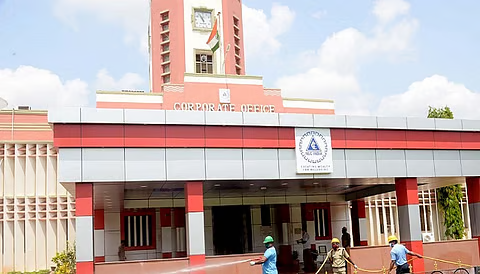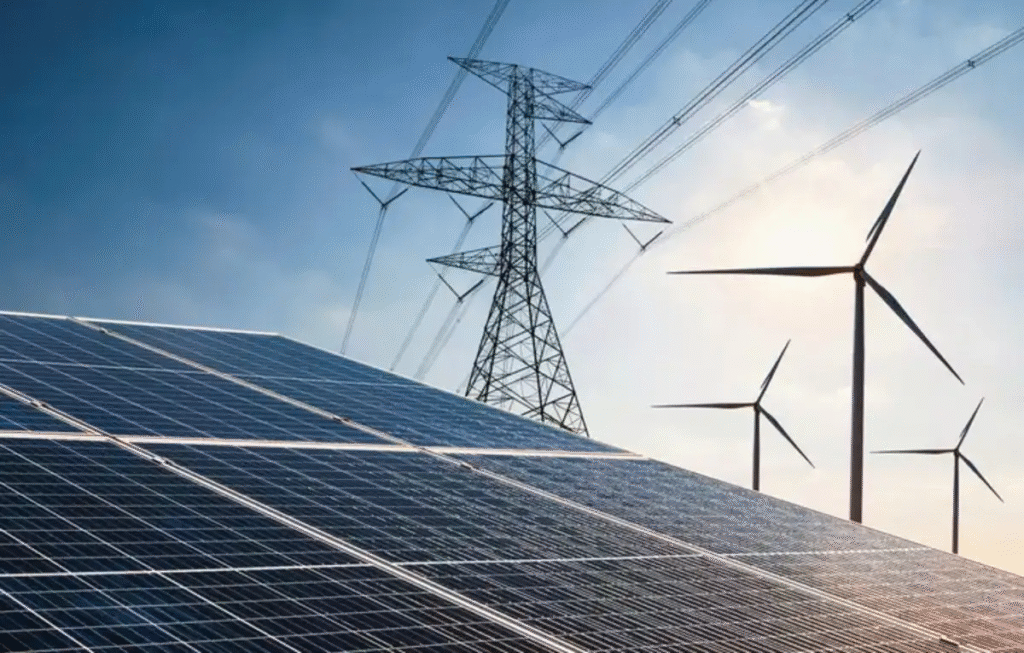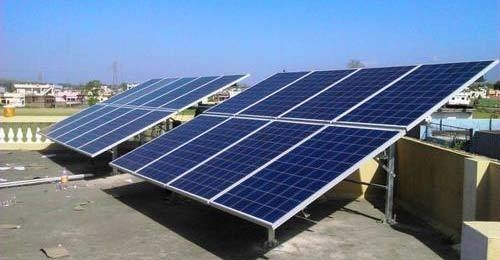
India’s pursuit of a cleaner, greener future received a significant boost as NLC India Limited’s subsidiary joined forces with the Maharashtra Renewable Energy Development Agency (MAHAPREIT) to form a strategic joint venture (JV). This partnership marks a pivotal moment in the country’s renewable energy journey, combining the strengths of two powerhouse organizations dedicated to scaling up green energy capacity. It underscores the commitment of both central and state-level agencies to collaboratively advance India’s climate goals and energy security.
As India strives to meet its ambitious target of 500 gigawatts (GW) of renewable energy capacity by 2030, alliances like these are crucial. The collaboration between NLC India and MAHAPREIT is more than a business arrangement; it’s a shared vision to transform the nation’s energy landscape, accelerate the adoption of renewable technologies, and support sustainable development across regions. This joint venture could set new benchmarks for public sector partnerships in the green energy domain, driving innovation, investment, and inclusivity.
A Convergence of Expertise and Vision
NLC India Limited, historically renowned for its coal mining and thermal power generation, has been undergoing a strategic transformation to embrace cleaner energy sources. This pivot reflects India’s broader transition away from fossil fuels and towards a sustainable energy future. Over the past few years, NLC India has invested heavily in solar and wind projects, emerging as a major player in the renewable sector.
On the other side, MAHAPREIT, a state agency dedicated to promoting renewable energy in Maharashtra, brings deep local knowledge, regulatory support, and experience in executing projects across diverse terrains. Maharashtra, with its favorable climate and industrial infrastructure, holds immense potential for solar and wind energy development, making MAHAPREIT an essential partner in realizing these projects.
The joint venture leverages NLC India’s national-level operational capabilities and technical expertise alongside MAHAPREIT’s regional insights and policy facilitation. Together, they are positioned to fast-track green energy projects that align with India’s National Energy Policy and international climate commitments.
This collaboration is emblematic of a growing trend where central and state entities join hands to pool resources, share risks, and scale up clean energy production efficiently. The combined efforts will not only augment renewable capacity but also drive technological advancements and sustainable financing models.
Strategic Importance of the JV in India’s Energy Transition
India’s energy sector is undergoing a profound transformation. The government’s emphasis on renewable energy stems from multiple imperatives: reducing carbon emissions, enhancing energy security, fostering economic growth, and meeting global climate responsibilities under the Paris Agreement. The establishment of this JV represents a strategic move to meet these multifaceted goals.
The partnership will focus on developing solar parks, wind farms, and hybrid renewable energy systems that optimize land and resource use. By integrating these diverse technologies, the JV aims to provide consistent and reliable power supply, overcoming the intermittency challenges often associated with renewable sources.
India’s renewable energy capacity has grown exponentially in recent years, but further scaling is required to meet rising demand and climate targets. The JV’s projects will contribute significantly to this growth trajectory, especially in Maharashtra, which ranks among the top states in renewable energy production.
Moreover, the JV is expected to explore cutting-edge solutions such as energy storage systems, grid modernization, and digital monitoring to enhance operational efficiency. These advancements will improve the stability and reliability of renewable power, making it more competitive with conventional energy sources.
Navigating Complex Challenges with Innovation and Collaboration
While the renewable energy sector holds vast promise, it also faces several challenges—technical, financial, environmental, and social. The JV between NLC India and MAHAPREIT is designed to address these challenges head-on through collaborative innovation and best practices.
Grid integration remains one of the foremost technical challenges. Renewable energy’s variable nature demands sophisticated grid management and storage solutions. The JV plans to invest in battery storage technologies and smart grids that can balance supply and demand dynamically. This will help avoid power fluctuations and ensure steady electricity delivery.
From a financial perspective, renewable projects require significant upfront investments. The JV aims to tap into diverse funding sources, including government subsidies, green bonds, and international climate funds. Efficient project management and economies of scale will further drive down costs, improving the commercial viability of the projects.
Environmental sustainability is central to the JV’s mission. Comprehensive impact assessments, land use planning, and biodiversity conservation will guide project design. The partners are committed to minimizing adverse effects and fostering ecological balance.
Social acceptance and community involvement will also be prioritized. Transparent communication, fair land acquisition practices, and inclusive benefit-sharing will build trust with local stakeholders. Job creation and skill development initiatives will empower communities, aligning economic growth with environmental stewardship.
Maharashtra’s Renewable Energy Potential: A Focus Area
Maharashtra, India’s second-most populous state and an industrial powerhouse, is pivotal in the country’s renewable energy ambitions. The state enjoys favorable solar irradiance and wind patterns, creating ideal conditions for large-scale renewable installations. However, realizing this potential requires concerted efforts in project development, regulatory facilitation, and infrastructure enhancement.

MAHAPREIT, as the state’s renewable energy agency, has spearheaded numerous initiatives to promote solar parks and wind farms. Its collaboration with NLC India promises to scale these efforts significantly. The JV will target high-potential regions, develop infrastructure, and streamline approvals to accelerate project deployment.
The projects will also focus on hybrid solutions that combine solar and wind energy with storage to optimize resource utilization. Such systems ensure continuous power supply even when one source is unavailable, improving grid stability.
In addition to clean power generation, the JV will drive socio-economic development in Maharashtra. Renewable energy projects create employment opportunities in construction, operations, and maintenance. Local manufacturing of components will further boost the industrial ecosystem.
Policy and Regulatory Support Bolstering Renewable Growth
India’s robust policy framework underpins its renewable energy expansion. National schemes like the National Solar Mission and Wind Energy Mission provide incentives and set capacity targets. The government’s commitment to climate action is reflected in ambitious goals, streamlined approvals, and support mechanisms.
The JV is well-positioned to benefit from these policies. Its projects align with national priorities, making them eligible for subsidies, tax breaks, and concessional financing. Coordination between NLC India and MAHAPREIT will facilitate smoother regulatory clearances, expediting project timelines.
Furthermore, state-level policies in Maharashtra complement national initiatives by offering additional incentives and support infrastructure. The JV will leverage these advantages to optimize project economics and scale.
This alignment between policy, technology, and market demand is crucial for sustained renewable energy growth. The JV represents a model of effective public sector collaboration that can inspire similar partnerships across states.
Technological Innovation: The Backbone of Renewable Success
The success of renewable energy projects increasingly hinges on technological innovation. The NLC India-MAHAPREIT JV plans to harness state-of-the-art technologies to maximize efficiency and sustainability.
Solar photovoltaic (PV) advancements, including bifacial panels and tracking systems, will enhance energy capture. On the wind front, modern turbines with larger rotor diameters and higher hub heights will tap into stronger winds at higher altitudes.
Energy storage solutions, such as lithium-ion batteries and emerging alternatives, will mitigate intermittency issues. The JV also plans to explore hybrid systems that combine solar, wind, and storage for optimal performance.
Digital technologies like IoT-enabled sensors, AI-powered predictive maintenance, and blockchain-based energy trading platforms will improve asset management and market integration.
By investing in these technologies, the JV aims to set new standards in operational excellence and project sustainability.
Economic and Social Impact: Beyond Energy Generation
Renewable energy projects are catalysts for broad economic and social benefits. The JV’s initiatives will generate direct employment during construction and operational phases and indirect jobs through supply chains and services.
Skill development programs tailored for local populations will empower youth and women, fostering inclusive growth. The projects will also stimulate local economies by increasing demand for goods and services.
Environmental benefits include reduced greenhouse gas emissions, improved air quality, and conservation of natural resources. Socially, access to clean energy enhances health outcomes and educational opportunities, particularly in rural areas.
The JV’s commitment to corporate social responsibility will extend to community development initiatives, such as healthcare camps, educational scholarships, and infrastructure improvements.
These efforts will ensure that the green energy transition uplifts communities and contributes to India’s sustainable development goals.
International Collaboration and Financing Opportunities
The global momentum for climate action has opened avenues for international collaboration and financing. The JV plans to engage with multilateral agencies, development banks, and foreign investors interested in supporting India’s renewable ambitions.
Access to international climate finance, technology transfer, and best practices will accelerate project development and innovation. This global engagement will also enhance India’s standing as a renewable energy leader on the world stage.
By showcasing successful public sector partnerships like this JV, India can attract further investments and foster cross-border knowledge exchange.
Future Outlook: Scaling Up and Replicating Success
The NLC India and MAHAPREIT joint venture is a blueprint for future collaborations in renewable energy. Its integrated approach combining technical expertise, policy support, financial innovation, and social inclusion is poised to deliver impactful results.
As the JV scales up projects, it will contribute substantially to India’s renewable capacity, energy security, and climate targets. Lessons learned will inform similar partnerships nationwide, fostering a collaborative ecosystem.
The green energy transition is not just about power generation but about building resilient communities, sustainable economies, and a healthier environment. This JV embodies that vision, charting a course towards a cleaner, prosperous India.

